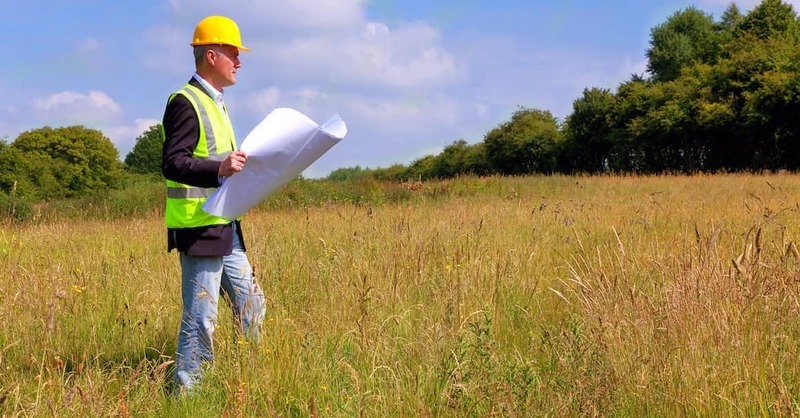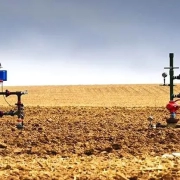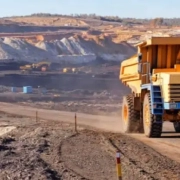The information provided on this page is for general informational purposes only and does not constitute legal, financial, or investment advice. Oil and gas laws, mineral rights regulations, and royalty structures vary significantly by state and jurisdiction. While we strive to provide accurate and up-to-date information, no guarantee is made to that effect, and laws may have changed since publication.
You should consult with a licensed attorney specializing in oil and gas law in your jurisdiction, a qualified financial advisor, or other appropriate professionals before making any decisions based on this material. Neither the author nor the publisher assumes any liability for actions taken in reliance upon the information contained herein.
The world’s mineral resources are unevenly distributed across the globe, often spanning across national borders. Managing and exploiting these cross-border mineral rights involves a complex interplay of legal, economic, environmental, and geopolitical factors. As the demand for minerals continues to grow, particularly for those critical to emerging technologies and renewable energy, the importance of effectively managing cross-border mineral rights becomes ever more significant. This article explores the various challenges and opportunities associated with cross-border mineral rights.
Understanding Cross-Border Mineral Rights
Cross-border mineral rights refer to mineral resources that extend across two or more countries’ boundaries. These resources can include metals like gold, copper, and iron, as well as non-metallic minerals such as coal and limestone. Managing these resources requires cooperation between the involved nations, as well as compliance with both national and international laws.
The Role of International Law
International law plays a crucial role in governing cross-border mineral rights. Treaties, conventions, and bilateral agreements help establish the legal framework for exploration, extraction, and profit-sharing. The United Nations Convention on the Law of the Sea (UNCLOS) is an example of a treaty that regulates the exploration and exploitation of marine mineral resources.
Bilateral and Multilateral Agreements
Countries often enter into bilateral or multilateral agreements to manage cross-border mineral resources. These agreements define the terms and conditions under which exploration and extraction activities can take place. They also address issues such as environmental protection, revenue sharing, and dispute resolution mechanisms.
Challenges in Managing Cross-Border Mineral Rights
Managing cross-border mineral rights presents numerous challenges, ranging from legal and regulatory hurdles to environmental and social concerns.
Legal and Regulatory Complexities
One of the primary challenges is navigating the legal and regulatory frameworks of multiple countries. Each country has its own set of laws and regulations governing mineral resources, and these can vary significantly. Harmonizing these regulations to facilitate cross-border cooperation is a complex and often contentious process.
Differing Legal Systems
Countries involved in cross-border mineral projects may have different legal systems, such as common law, civil law, or customary law. These differences can complicate the negotiation and implementation of agreements, as well as the resolution of disputes.
Regulatory Uncertainty
Frequent changes in laws and regulations can create uncertainty for companies involved in cross-border mineral projects. This regulatory instability can deter investment and complicate long-term planning.
Geopolitical Tensions
Geopolitical tensions between countries can pose significant challenges to managing cross-border mineral rights. Disputes over territorial boundaries, resource ownership, and profit-sharing can hinder cooperation and lead to conflicts.
Territorial Disputes
Territorial disputes are a common issue in cross-border mineral projects. These disputes can arise from ambiguous or contested boundaries, historical claims, or differing interpretations of international law.
Resource Nationalism
Resource nationalism, where countries seek to assert greater control over their natural resources, can also complicate cross-border mineral projects. This can manifest in policies that favor domestic companies, increase taxes or royalties on foreign operators, or impose stricter environmental regulations.
Environmental and Social Concerns
Environmental and social concerns are critical considerations in cross-border mineral projects. Ensuring that these projects do not cause significant harm to the environment or local communities is essential for their sustainability and acceptance.
Environmental Impact
Cross-border mineral projects can have significant environmental impacts, including deforestation, soil erosion, water pollution, and biodiversity loss. Managing these impacts requires comprehensive environmental assessments and the implementation of mitigation measures.
Social Impact
The social impact of cross-border mineral projects can include displacement of local communities, loss of livelihoods, and conflicts over resource use. Ensuring that local communities are adequately consulted and compensated is essential for the success of these projects.
Infrastructure and Logistics
Developing the necessary infrastructure and logistics for cross-border mineral projects can be challenging. This includes building roads, railways, ports, and pipelines to transport minerals from remote areas to processing facilities and markets.
Infrastructure Development
Infrastructure development is often a significant barrier to cross-border mineral projects. The cost and complexity of building infrastructure in remote and challenging environments can be prohibitive.
Transportation and Logistics
Efficient transportation and logistics are crucial for the success of cross-border mineral projects. This includes not only physical infrastructure but also the coordination of cross-border customs and trade regulations.
Opportunities in Cross-Border Mineral Rights
Despite the challenges, cross-border mineral rights also present numerous opportunities for economic growth, regional cooperation, and sustainable development.
Economic Growth and Development
Cross-border mineral projects can drive economic growth and development by creating jobs, generating revenue, and attracting foreign investment. These projects can also stimulate the development of related industries, such as construction, manufacturing, and services.
Job Creation
The development and operation of cross-border mineral projects can create significant employment opportunities for local communities. This includes not only direct jobs in mining and processing but also indirect jobs in supporting industries.
Revenue Generation
Cross-border mineral projects can generate substantial revenue for governments through taxes, royalties, and other payments. This revenue can be used to fund public services, infrastructure development, and social programs.
Regional Cooperation and Integration
Cross-border mineral projects can promote regional cooperation and integration by fostering economic interdependence and collaboration. This can help build trust and reduce tensions between neighboring countries.
Economic Interdependence
Economic interdependence created by cross-border mineral projects can encourage countries to work together to ensure the success of these projects. This can lead to broader cooperation in other areas, such as trade, investment, and infrastructure development.
Collaborative Frameworks
Developing collaborative frameworks for managing cross-border mineral projects can enhance regional integration. This includes establishing joint management bodies, harmonizing regulations, and sharing best practices.
Sustainable Development
Cross-border mineral projects can contribute to sustainable development by promoting responsible resource management and environmental stewardship. This includes adopting best practices in environmental protection, social responsibility, and community engagement.
Responsible Resource Management
Responsible resource management involves using mineral resources in a way that maximizes their economic benefits while minimizing their environmental and social impacts. This includes implementing sustainable mining practices, reducing waste, and promoting resource efficiency.
Environmental Stewardship
Environmental stewardship involves protecting and preserving the natural environment during mineral exploration and extraction. This includes conducting thorough environmental assessments, implementing mitigation measures, and rehabilitating disturbed areas.
Case Studies of Cross-Border Mineral Projects
Examining case studies of successful cross-border mineral projects can provide valuable insights into best practices and lessons learned.
The Australia-Papua New Guinea Ok Tedi Mine
The Ok Tedi Mine is a significant example of a cross-border mineral project. Located in Papua New Guinea near the border with Indonesia, this mine has been a major source of copper and gold. The project has involved complex negotiations between the governments of Australia and Papua New Guinea, as well as significant environmental and social challenges.
Environmental and Social Management
The Ok Tedi Mine has faced significant environmental and social challenges, including river pollution and community displacement. Addressing these challenges has required comprehensive environmental management plans, community engagement, and compensation programs.
Revenue Sharing and Economic Benefits
The Ok Tedi Mine has generated substantial revenue for Papua New Guinea, contributing to economic development and public services. The project has also created significant employment opportunities for local communities.
The Chile-Argentina Pascua-Lama Project
The Pascua-Lama Project is a high-profile example of a cross-border mineral project involving Chile and Argentina. This gold and silver mine straddles the border between the two countries and has required extensive cooperation and negotiation.
Binational Agreement
The Pascua-Lama Project is governed by a binational agreement between Chile and Argentina, which establishes the legal and regulatory framework for the project. This agreement has facilitated cooperation and coordination between the two countries.
Environmental and Social Challenges
The Pascua-Lama Project has faced significant environmental and social challenges, including concerns about water use, glacier protection, and community impacts. Addressing these challenges has required stringent environmental assessments, mitigation measures, and community engagement.
Future Prospects and Strategies – Cross-border mineral rights
The future of cross-border mineral rights is shaped by evolving trends in technology, policy, and market dynamics. Developing effective strategies to manage these resources will be crucial for maximizing their benefits and minimizing their risks.
Technological Advancements
Technological advancements in mineral exploration and extraction can enhance the efficiency and sustainability of cross-border mineral projects. This includes innovations in remote sensing, automation, and data analytics.
Remote Sensing and Exploration
Remote sensing technologies, such as satellite imagery and geophysical surveys, can improve the accuracy and efficiency of mineral exploration. This can help identify new resources and optimize exploration efforts.
Automation and Efficiency
Automation technologies, such as autonomous drilling rigs and haul trucks, can enhance the efficiency and safety of mineral extraction. This can reduce operational costs and minimize environmental impacts.
Policy and Regulatory Frameworks
Developing effective policy and regulatory frameworks is essential for managing cross-border mineral rights. This includes harmonizing regulations, promoting transparency, and ensuring fair and equitable agreements.
Harmonizing Regulations
Harmonizing regulations between countries can facilitate cross-border cooperation and reduce regulatory uncertainty. This can involve aligning environmental standards, safety requirements, and labor practices.
Promoting Transparency
Promoting transparency in cross-border mineral projects is crucial for building trust and ensuring accountability. This includes disclosing information about project plans, environmental impacts, and financial transactions.
Market Dynamics and Demand – Cross-border mineral rights
Evolving market dynamics and demand for minerals will shape the future of cross-border mineral rights. This includes the growing demand for critical minerals used in renewable energy technologies, electric vehicles, and digital infrastructure.
Critical Minerals
The demand for critical minerals, such as lithium, cobalt, and rare earth elements, is expected to increase significantly in the coming years. Managing cross-border mineral rights for these resources will be crucial for ensuring their sustainable supply.
Renewable Energy Transition
The transition to renewable energy will drive demand for minerals used in solar panels, wind turbines, and battery storage. Cross-border mineral projects can play a key role in meeting this demand and supporting the global energy transition.
Cross-border mineral rights present both challenges and opportunities for stakeholders. Effectively managing these resources requires navigating complex legal, regulatory, environmental, and geopolitical landscapes. By adopting best practices in resource management, environmental stewardship, and regional cooperation, countries can maximize the economic benefits of cross-border mineral projects while minimizing their risks. The future of cross-border mineral rights will be shaped by technological advancements, evolving policy frameworks, and changing market dynamics. By proactively addressing these factors, stakeholders can ensure the sustainable and equitable development of cross-border mineral resources.
Do you have questions related to Cross-border mineral rights? Feel free to reach out to us here.











